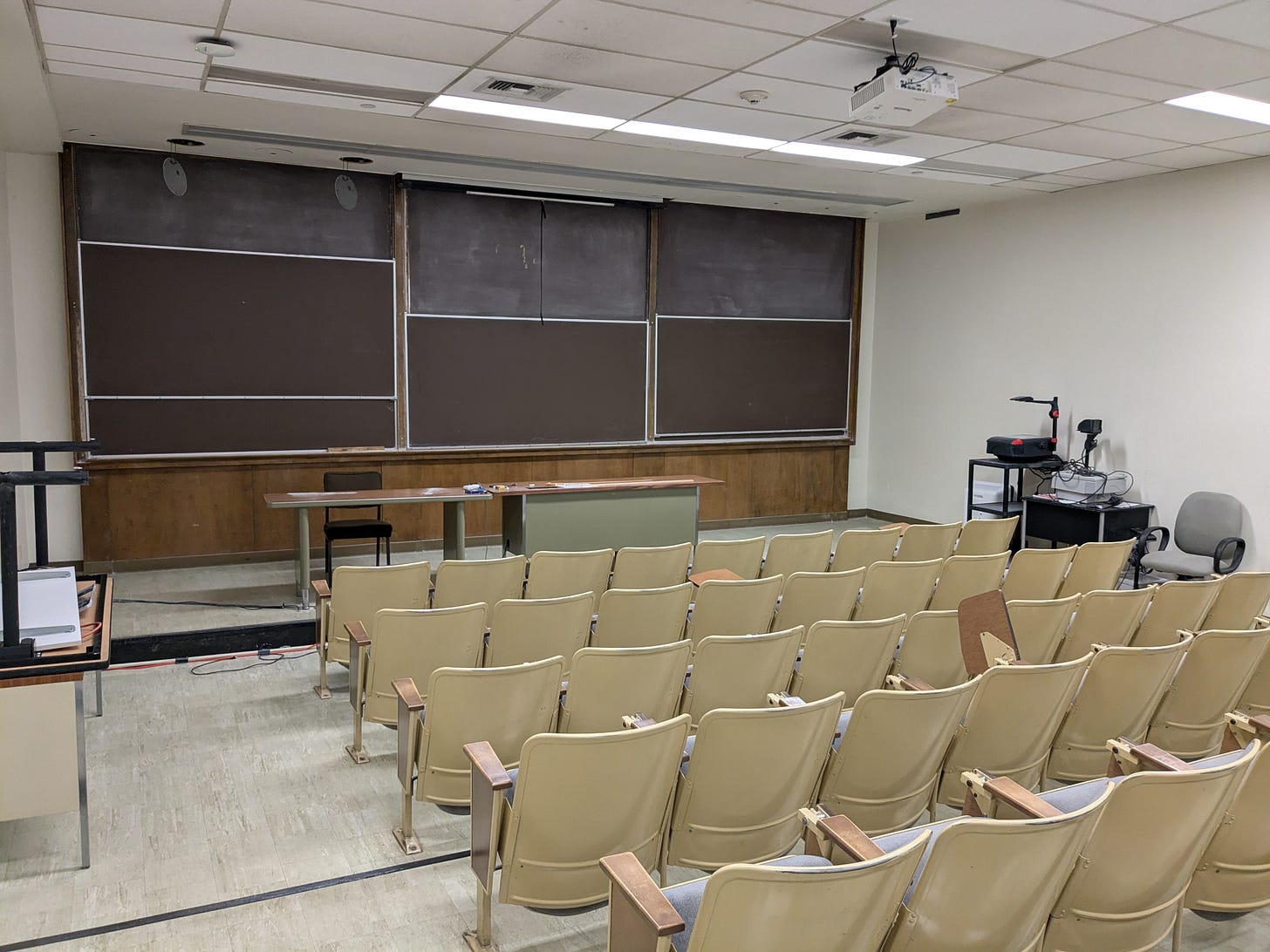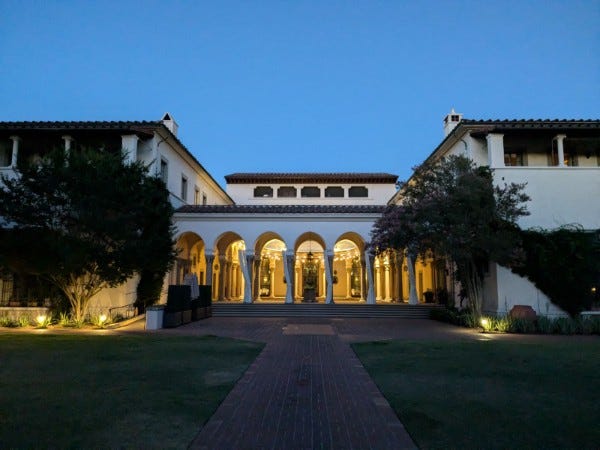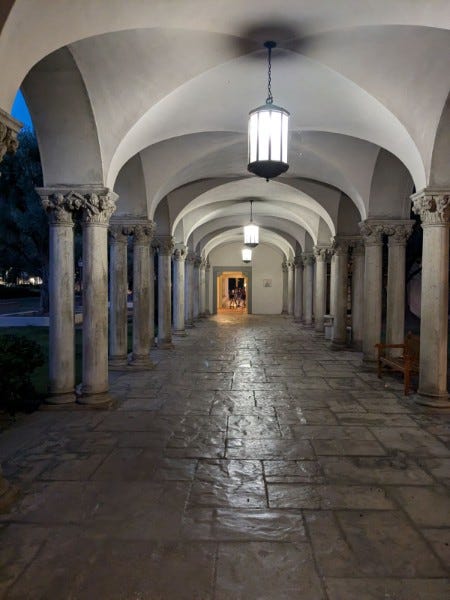I’m visiting Caltech this week. On Monday I’ll give a talk on my recent paper with Calmet https://arxiv.org/abs/2404.02331
Slides (lots of extra material at the end from previous talks on this subject)
Hard at work at Feynman’s old desk:
This is where Feynman taught his special course “Physics X” when I was a student. It met once a week and he would entertain any student questions about physics or science.
Here are some photos I took while wandering around campus.
The Athenaeum.
Old houses on the Olive Walk: Fleming and Ricketts.
Millikan Library
Student center and Page House - “Where Men are Men, and Giants Walk the Earth.”










Page House!
Very interesting, but I don't really understand how you are thinking of replica models of black holes as validating anything. I tend to worry that such replica systems are given undeserved significance because the same kinds of things that you might worry go wrong in your mathematical derivation are often reasons to worry the replica might be an imperfect model.
I mean, if you have an actual machine verified proof that gravitational blackholes do exhibit certain properties and you don't see those in some replica system isn't that merely evidence that the replica system doesn't perfectly obey the mathematical rules in GR? So maybe if you don't have a full machine verified proof you might think that the replica system showing the same behavior is evidence you haven't made a mistake?
Alternatively, maybe the concern is about the fact that one doesn't have a formal proof per se but has an argument that depends on semi-mathematical assumptions, e.g., we can neglect such and such effects of we can use this approximation.
If one had alot of confidence that the replica system actually obeyed the full -- unsimplified -- mathematics then you could use the replica system as, essentially, a very high precision numerical simulation verifying that your assumptions do correctly predict what happens in the full unsimplified case.
But, in both cases it's really important to have a real clear account of what assumptions were made to derive the supposed analogy between the two systems. In very few cases does one start with something like the full dynamics of both sets of physical laws and prove that every solution of the replica system under such and such conditions gives rise to a solution of the full equations of general relativity. To the extent one has more than just the fact that the replica seems to exhibit behavior otherwise like what we've predicted about gravitational black holes it's usually relying on exactly the same kind of simplifying assumptions that might have lead the mathematical predictions for gravitational black holes astray.
I guess I worry that what we are implicitly doing with replica systems is just finding a physical system that captures how we think the gravitational case operates so it's not providing any independent confirmation so much as just reflecting back the assumptions one makes about what matters for the gravitational case.
Yes, I guess a sufficently careful discussion could determine that it produces a tiny bit of evidence (ie you didn't fuck up the math on the part that does accurately describe the replica) but that's not much evidence at all and still seems to require more than just saying the replica showed similar phenomenon.